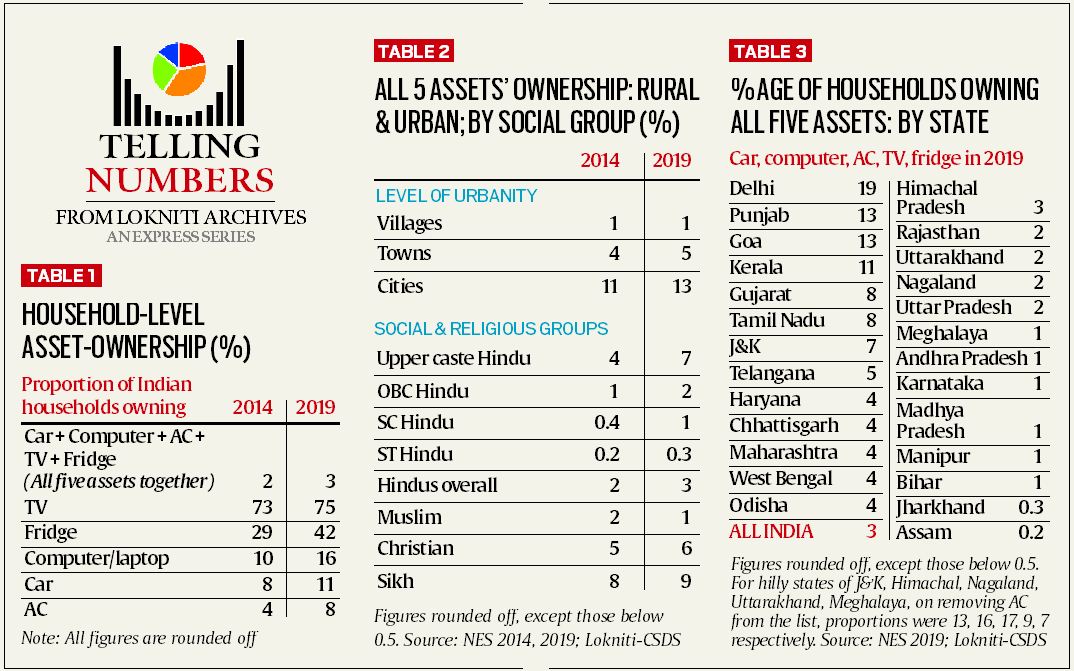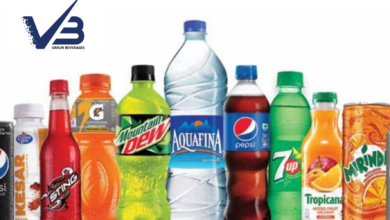
Determining the prosperity level of Indian households has always been a tough nut to crack for the nation’s economists. Many estimates were made to measure the prosperity level of Indian families, but most of these often failed. However, one such recently ascertained estimate is said to be successful in demonstrating the prosperity level. It is called household-level asset ownership. Experts will take a deep look to analyze everything related to this estimate. What is the forecast, how does it work, its components, what does it show, and everything else? We shall discuss all of this in today’s article.
Households level asset ownership
Indians’ households have always been challenging to determine in terms of prosperity, and therefore, economists have been making constant efforts to resolve it by any means. The asset ownership level of households in the nation is an excellent way of determining prosperity. Gauging the ownership of these five assets, this estimate helps in determining worth.
These five essential assets are ownership of a car, an air conditioner at their home, a refrigerator, a laptop or desktop computer, and a television. Our economy is growing at a breakneck pace, and therefore ownership of these assets is referred to as belonging to economic well-being in this aspirational economy. Apart from the enormous assets such as house ownership and land, these five assets are those which the Indian middle class yearns to possess.
Let us now look at the proportion of Indians who own these assets.
The Lokniti CSDS did Ana analysis during its National Election Study, which they did in 2019. The research indicated that no more than 3% of Indian households have ownership rights to these five assets. The analysis means only 1 out of 33 people own all these five assets at the same time. If you are wondering about the pace of growth of the ownership of these five assets, we shall tell you that the rate has been prolonged and is not exceptional at all.
In the year 2014, which means five years before this level of 2019, the level of ownership of all these five assets at the same time was 2 percent. It meant only 1 out of 50 households had owned all these five assets at the same time. Now, it has reached 3 percent, but the growth is not much.
Moreover, we all know how hard the COVID-19 led pandemic was on every single one of us. The pandemic led to the shrinking of household incomes, and now it is sure that this growth of the ownership of these assets is affected, and the pace has been slowed down compared to the pre-pandemic period. Moreover, people have also started to spend less, which is not suitable for this ownership level.
The result is evident from the asset ownership data collected from five states that have gone to polls after the onset of the pandemic during the studies. These five states are Kerala, Bihar, Tamil Nadu, Assam, and West Bengal and the data clearly shows that the level of ownership of these five assets by the local households in those states have not grown in the last two years by much and has remained almost constant, majorly due to the pandemic.
However, even if the level of ownership of all these assets at the same period by a household is notably trim, if an individual look is given at the right of each one of these assets alone, it shows that some of these assets have witnessed robust growth in the last few years.
Allow us to explain this. Talking about the ownership of refrigerators by a local Indian household, it was 29 percent in the year 2014 and has risen to 42 percent by the end of 2019. Similarly, the ownership of desktop computers/laptops grew from 10 percent in 2014 to 16 percent in the year 2019. However, things were not the same for the level of people who owned a car. The growth of the households owning a car has been rather painfully slow.
You would be shocked to know that if your family owned a car in 2019, you would be one of the total eleven percent of the Indian households in the country who owned a car. It is a surprise for those living in congested cities and arguing every day about parking space every single day that as low as a quarter of households in Indian cities own a car. Regarding regional differences, the families residing in the cities are much better than those living in villages in these ownership levels.
The growth of households owning a car started at a significant place. It grew from a small two percent in 1999 to a better level of 5 percent in 2004. However, this growth slowed down by a lot in the upcoming years, and it took around 15 years to surpass the ten percent mark. The data shows how poor the growth of car ownership has been. The number is more than half of the total Indian households, which is excellent. However, on the brighter side, about 56 percent of the total Indian households own a two-wheeler. This is due to the better affordability of two-wheelers as compared to cars for Indian households.
However, it should also be noted that about two-fifths of the Indian families, that is, 42 percent, do not own either a car or a two-wheeler.
Lastly, the air conditioner has not been much popular too, even after the scorching heat of the country and them being popular in the metro cities. The ownership of air conditioners remains out of budget for nine out of ten Indian households. Therefore the level of ownership of an air conditioner by Indian families is low too.
Notably, the social gap in Indian households is enormous too. There are significant differences in the ownership level of these assets among different Indian social groups. According to the data, the Upper Caste Hindu households are seven times more likely to own all these five assets simultaneously than the Dalit and Muslim families. These upper-caste Hindu households are much more likely to travel by car as compared to the Dalits.
Among the religious groups, Sikh households are the most prosperous of all the people.
There also exist many differences between rural and urban Indian households. When 13% of Indian households living in cities can own all these five assets at one time, households living in towns are five percent, and the level of households living in villages is as low as one percent.
Talking about differences found in states, the highly urbanized states of Delhi, Punjab, Goa, and Kerala emerged at the top of the table of owning all these five assets at one time. All these states had a double-digit proportion of households owning all the five assets together. However, on the other end, eight states had a percentage level of households owning all these together as low as one percent. The states of Assam And Jharkhand were the worst of all.
Article Proofread and Edited by Shreedatri Banerjee




